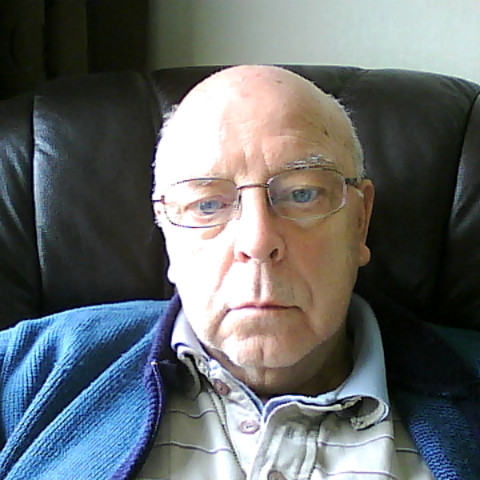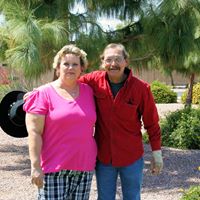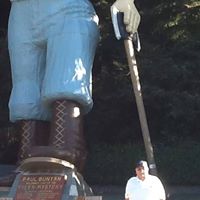Gerald W Swift
age ~77
from Rolling Hills Estates, CA
Gerald Swift Phones & Addresses
- Rolling Hills Estates, CA
- Huntington Beach, CA
- 1515 3Rd St, Rochester, MN 55906 • 5072815529
- Redondo Beach, CA
- Torrance, CA
- Orange, CA
Education
-
Degree:Doctor of Jurisprudence/Juris Doctor (J.D.)
-
School / High School:South Texas College of Law
Ranks
-
Licence:Texas - Eligible To Practice In Texas
-
Date:1995
Us Patents
-
Fully Balanced Transimpedance Amplifier For High Speed And Low Voltage Applications
view source -
US Patent:6433638, Aug 13, 2002
-
Filed:Sep 6, 2000
-
Appl. No.:09/655816
-
Inventors:Randolph B. Heineke - Rochester MN
Scott Allen Olson - Rochester MN
David Peter Swart - Pine Island MN
Gerald Wayne Swift - Rolling Hills Estates CA -
Assignee:International Business Machines Corporation - Armonk NY
-
International Classification:H03F 345
-
US Classification:330260, 330 85, 330110, 330311
-
Abstract:A fully balanced transimpedance amplifier for high speed and low voltage applications is provided. An input stage of the amplifier uses a matched pair of common source connected transistors with sources tied directly to ground to eliminate the Vds overhead usually found in differential pairs. The ground connection minimizes a source resistance noise component, while matching minimizes power supply noise generation and susceptibility for an array of amplifiers. Feedback resistors along with diode connected MESFETS determine the transimpedance of the amplifier. The nonlinearity of diodes helps to soften clipping. Transresistance also determined the noise generated by the amplifier, and the diode connected MESFETS offer lower noise than resistors for the same impedance. Stability is achieved through use of only a single stage of gain in a loop of the input stage, while additional gain is achieved through cascading in the input stage. A differential stage minimizes any difference in amplitude between two sides of the amplifier input stage.
-
Method Of Making Surface Laminar Circuit Board
view source -
US Patent:6594893, Jul 22, 2003
-
Filed:Sep 18, 2001
-
Appl. No.:09/953934
-
Inventors:Mark J. Bailey - Lake City MN
Michael John Shea - Rochester MN
Gerald Wayne Swift - Rolling Hills Estates CA -
Assignee:International Business Machines Corporation - Armonk NY
-
International Classification:H05K 310
-
US Classification:29846, 29825, 29852, 174254, 174255, 427 97
-
Abstract:A surface laminar circuit board includes an insulating layer, and a signal ground conductive layer disposed on an upper surface of the insulating layer. The conductive layer has a hole formed therein. A photosensitive dielectric layer is disposed on an upper surface of the signal ground conductive layer. The dielectric layer has a photo micro-via formed therein. A signal trace is disposed on the photosensitive dielectric layer, and is electrically coupled with the signal ground conductive layer by way of the photo micro-via. A conductive pad is provided, which has a majority thereof within an area defined by an outer periphery of the hole. The conductive pad is electrically coupled with the signal trace. A surface mounted component is mounted on the conductive pad.
-
Surface Laminar Circuit Board Having Pad Disposed Within A Through Hole
view source -
US Patent:6734369, May 11, 2004
-
Filed:Aug 31, 2000
-
Appl. No.:09/651334
-
Inventors:Mark J. Bailey - Lake City MN
Michael John Shea - Rochester MN
Gerald Wayne Swift - Rolling Hills Estates CA -
Assignee:International Business Machines Corporation - Armonk NY
-
International Classification:H05K 103
-
US Classification:174255, 361768, 361794, 361795
-
Abstract:A surface laminar circuit board includes an insulating layer, and a signal ground conductive layer disposed on an upper surface of the insulating layer. The conductive layer has a hole formed therein. A photosensitive dielectric layer is disposed on an upper surface of the signal ground conductive layer. The dielectric layer has a photo micro-via formed therein. A signal trace is disposed on the photosensitive dielectric layer, and is electrically coupled with the signal ground conductive layer by way of the photo micro-via. A conductive pad is provided, which has a majority thereof within an area defined by an outer periphery of the hole. The conductive pad is electrically coupled with the signal trace. A surface mounted component is mounted on the conductive pad.
-
High Frequency Matching Method And Silicon Optical Bench Employing High Frequency Matching Networks
view source -
US Patent:20020131724, Sep 19, 2002
-
Filed:Mar 15, 2001
-
Appl. No.:09/809127
-
Inventors:Mark Bailey - Lake City MN, US
David Gaio - Rochester MN, US
William Hogan - Rochester MN, US
Gerald Swift - Rolling Hills Estates CA, US -
Assignee:INTERNATIONAL BUSINESS MACHINES CORPORATION
-
International Classification:G02B006/42
G02B006/30 -
US Classification:385/088000, 385/049000
-
Abstract:A high frequency matching method and silicon optical bench employing a high frequency matching network are provided. The silicon optical bench comprises a silicon wafer defining a structure for precisely locating an electro-optical component. A predefined metal trace pattern is formed on a surface of the silicon wafer. The predefined metal trace pattern at least one electrical device, such as a thin film resistor, a capacitor or an inductor; or a selected combination of at least one thin film resistor, capacitor or inductor formed at selected predefined locations within the predefined metal trace pattern. The predefined metal trace pattern provides a high frequency impedance matching network for connection with the electro-optical component. The predefined metal trace pattern includes a plurality of selected widths within the predefined metal trace pattern. The widths are selectively provided for changing inductance within the predefined metal trace pattern. The predefined metal trace pattern includes at least one capacitive stub. The capacitive stub is formed within the predefined metal trace pattern for balancing inductance within the predefined metal trace pattern. The thin film resistor is formed at a predefined location within the predefined metal trace pattern by depositing the thin film resistor on a surface of the predefined metal trace pattern. A pair of thin film resistors can be formed at predefined locations within the predefined metal trace pattern adjacent to a pair of traces of the predefined metal trace pattern that connect to electro-optical component, such as a laser.
-
Phased Array With Integrated Bandpass Filter Superstructure
view source -
US Patent:60368152, Mar 14, 2000
-
Filed:Apr 30, 1998
-
Appl. No.:9/070819
-
Inventors:Carl W. Peterson - Carson CA
Harry C. Jones - Cerritos CA
Mir Akbar Ali - Lomita CA
Gerald W. Swift - Rolling Hills Estates CA -
Assignee:Hughes Electronics Corporation - El Segundo CA
-
International Classification:B32B 3100
-
US Classification:156330
-
Abstract:A phased array (20) and method for constructing the same are disclosed. The phased array (20) includes a superstructure (22) with cavities (40) therein. A cover plate (28) is mounted to the superstructure (22) and cooperates with the cavities (40) to form cavity style filters therebetween and to form a box-beam type superstructure. Ideally, the superstructure (22) is self supporting. Electronic modules (32) and amplifiers (33) are mounted to the superstructure (22). The method includes machining a block of material to form a webbed superstructure with cavities (40) therein. A cover plate (28) is mounted to the superstructure (22) over the cavities (40) to form cavity style filters. Amplifiers (32) and antenna elements (30) are then affixed to the superstructure (22) and cover plate (28). Ideally, the cover plate (28) is affixed to the superstructure (22) using an electrically conductive adhesive.
-
Extra High Frequency (Ehf) Circuit Module
view source -
US Patent:47289040, Mar 1, 1988
-
Filed:Jan 27, 1987
-
Appl. No.:7/009644
-
Inventors:Gerald W. Swift - Rolling Hills Estates CA
Patrick J. O'Sullivan - Manhattan Beach CA -
Assignee:TRW Inc. - Redondo Beach CA
-
International Classification:H03F 360
-
US Classification:330286
-
Abstract:A structure for extra-high-frequency circuit modules, to take advantage of the low losses and convenience of assembly of waveguides, and at the same time to take advantage of the ease of tuning of microstrip lines. Each module is adapted to be conveniently connectable to others in a cascade arrangement, and each presents a waveguide interface to adjacent modules. If a module is to contain an active device, such as an amplifier, the module incorporates a microstrip section and two transition sections to couple the microstrip section to the waveguides at input and output. The microstrip section is easily tunable and is easier to couple to the active device.
-
Phased Array With Integrated Bandpass Filter Superstructure
view source -
US Patent:57811628, Jul 14, 1998
-
Filed:Jan 12, 1996
-
Appl. No.:8/585825
-
Inventors:Carl W. Peterson - Carson CA
Harry C. Jones - Cerritos CA
Mir Akbar Ali - Lomita CA
Gerald W. Swift - Rolling Hills Estates CA -
Assignee:Hughes Electronic Corporation - Los Angeles CA
-
International Classification:H01Q 2100
-
US Classification:343853
-
Abstract:A phased array (20) and method for constructing the same are disclosed. The phased array (20) includes a superstructure (22) with cavities (40) therein. A cover plate (28) is mounted to the superstructure (22) and cooperates with the cavities (40) to form cavity style filters therebetween and to form a box-beam type superstructure. Ideally, the superstructure (22) is self supporting. Electronic modules (32) and amplifiers (33) are mounted to the superstructure (22). The method includes machining a block of material to form a webbed superstructure with cavities (40) therein. A cover plate (28) is mounted to the superstructure (22) over the cavities (40) to form cavity style filters. Amplifiers (32) and antenna elements (30) are then affixed to the superstructure (22) and cover plate (28). Ideally, the cover plate (28) is affixed to the superstructure (22) using an electrically conductive adhesive.
-
Radial Wave Power Divider/Combiner And Related Method
view source -
US Patent:46848746, Aug 4, 1987
-
Filed:Feb 5, 1985
-
Appl. No.:6/698296
-
Inventors:Gerald W. Swift - Rolling Hills Estates CA
David I. Stones - Torrance CA -
Assignee:TRW Inc. - Redondo Beach CA
-
International Classification:H01P 512
-
US Classification:333125
-
Abstract:A microwave radial power divider/combiner device having desirably broad bandwidth response over a selected frequency range. The device includes a radial waveguide that has a number of adjoining annular sections, each of selected radial length and axial height, to provide lumped circuit parameters closely euqivalent to those of an ideal filter with the desired passband characteristics. The ideal filter is first designed using conventional synthesis techniques, then modified, if necessary, to allow its realization in radial waveguide form. The waveguide sections are selected to have lengths and uniform heights to approximate the lumped circuit parameters of the filter, and the dimensions are then optimized to provide the closest approach to the desired performance characteristics.
Name / Title
Company / Classification
Phones & Addresses
President
YACHTS UNLIMITED, INC
3400 Via Oporto RM 7, Newport Beach, CA 92663
Lawyers & Attorneys

Gerald Arthur Swift - Lawyer
view sourceLicenses:
Texas - Eligible To Practice In Texas 1995
Education:
South Texas College of Law
Degree - Doctor of Jurisprudence/Juris Doctor (J.D.)
Graduated - 1994
Degree - Doctor of Jurisprudence/Juris Doctor (J.D.)
Graduated - 1994
Resumes

Gerald Swift
view source
Gerald Swift
view sourceLocation:
United States

Gerald Swift
view sourceLocation:
United States

Gerald Swift
view sourceLocation:
United States
Youtube
Googleplus

Gerald Swift
Flickr

Gerald Swift
view source
Gerald Swift
view source
Gerald Swift
view source
Gerald Bigdoozie Swift
view source
Gerry Swift
view source
Gerald Swift
view source
Gerald Swift
view sourceClassmates

Gerald Swift
view sourceSchools:
Lakeside High School Decatur GA 1985-1989
Community:
Sheri L, Tommy Barron, Randall Thibodeaux, Judy Darcy

Gerald Swift
view sourceSchools:
Elmwood High School Winnipeg Palestinian Territory, Occupie 1971-1975
Community:
Colleen Armstrong, Dean Russell, Kim Bergen, Joan Nielson

Gerald Swift
view sourceSchools:
Sheyenne High School Sheyenne ND 1958-1962
Community:
Rita Haman, Ben Rusness

Gerald Swift
view sourceSchools:
St. James of the Valley School Cincinnati OH 1960-1964
Community:
Karen Anderson, Ronald Baird, Monique Wesselkamper, Suzanne Chitwood

Gerald Swift
view sourceSchools:
Creighton Preparatory Omaha NE 1944-1948
Community:
Gerald Preiner, William Grifin, Gerald Kube, James Caniglia, Robert Soener, John Meis, Francis Buglewicz, Thomas Subject, Patrick Connor, John Jeffrey

gerald swift | Carmichael...
view source
Gerald Swift | Greenhills...
view source
Jerry Swift | West Meckle...
view sourceGet Report for Gerald W Swift from Rolling Hills Estates, CA, age ~77













